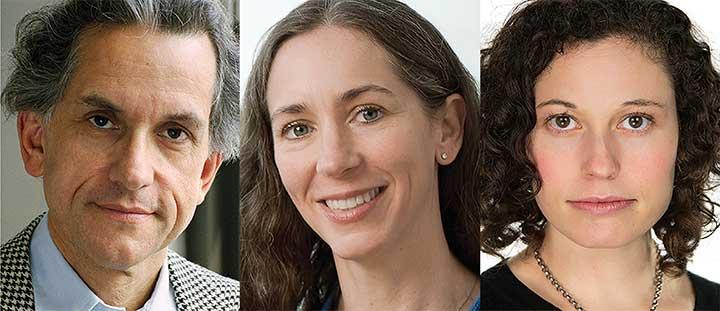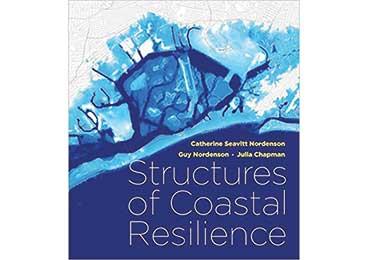
How do you prepare for rising seas when you don’t know how high the waves will reach? How do you design communities to withstand unpredictable hurricanes 50 years from now?

Readying communities for an uncertain future is the aim of “resilient” design, an approach to architecture and policy at the heart of a new book by a trio of Princeton authors. Structures of Coastal Resilience (Island Press), published last summer, is a collaboration by Guy Nordenson, a professor of structural engineering and architecture at Princeton, and architects Catherine Seavitt Nordenson *96 and Julia Chapman ’09 *14. The book draws on a multiyear project of the same name and combines insights from science, engineering, and art to reimagine cities’ relationship with the coast in a changing climate.
“Resilience doesn’t necessarily mean staying the same,” says Nordenson. “The challenges of climate change require various forms of transformation.”
The book comes on the heels of hurricanes Katrina, Sandy, Harvey, Irma, Maria, and Michael, whose destruction revealed the vulnerability of coastal defenses against Atlantic hurricanes. Resilience, say the authors, means responding to these challenges not with bigger walls and levees — which risk catastrophic failure — but with layered defenses that account for the natural environment and local community.
“I hope that this book provides not only an awareness of climate change, sea-level rise, and storm surge, but also an optimistic outlook with concrete solutions,” says Chapman, an associate at Ennead Architects and an adjunct professor of architecture at the City College of New York.
The authors collaborated with engineers, scientists, and artists to develop maps that showed the future flooding risk under various sea-level-rise scenarios. After mapping out the dangers, the book provides an overview of various designs the authors and others have proposed for sites ranging from far offshore to well inland. For example, preserving natural wetlands and oyster beds — or seeding artificial ones — could protect cities from waves and storm surges, while green space that channels floodwaters and houses lifted on their foundations far inland help control and mitigate floods years in the future, all while making the community more livable.
“There’s no single big fix; there’s never going to be a binary wet-dry scenario where you have total protection,” says Seavitt Nordenson, an associate professor of architecture at CCNY, who is married to Nordenson. “These ecological approaches are much more realistic because they can address the community’s need, and they also work better because you have a whole series of checks and backups.”
Guy Nordenson credits the many collaborators on the Structures of Coastal Resilience project, including Princeton professors Ning Lin, Paul Lewis, and Michael Oppenheimer, for adding both scientific rigor and a policy perspective to the design process. However, he says, the massive transformations required to make cities more resilient will require even broader coalitions.
“Like everything else, we need an informed public, and mobilization, and pressure on the political system at all levels,” he says. “I’m grateful that I’m living in this country, because I feel like there is still that pioneer spirit and feeling that we can make things better.”
